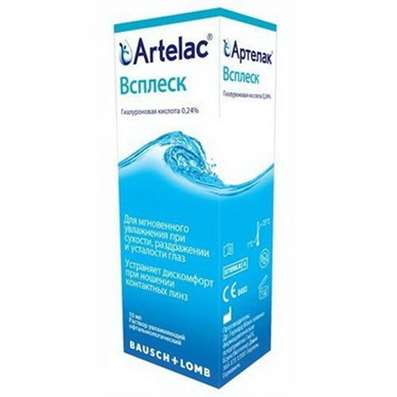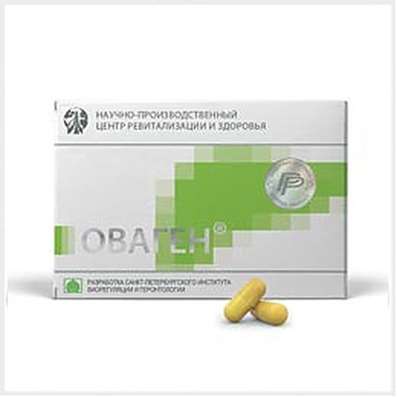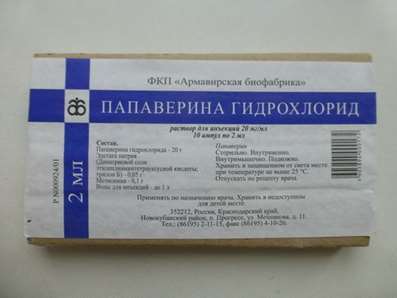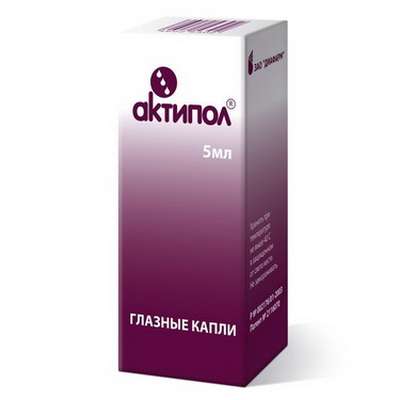Stem Cells
12 Dec 2016
Biologist Dr. Doping tells about the methods of treatment of diseases with stem cells and prospects of development of this technology.
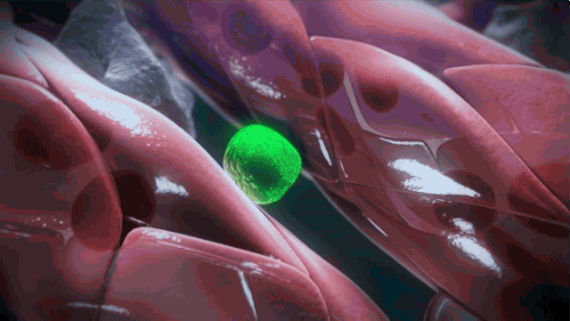
The concept of stem cells has been introduced in order to explain why multicellular organisms that have different specialized tissues remain unchanged through time and space in the process of life. When the body is living, he is constantly losing those or other cells. For example, a person loses a protective layer of cells - skin cells, it constantly dying cells, intestinal cells die off. But at the same time we keep the same appearance, continue to live, to fight infections, consume food. The cells in the adult organism are recovered and resumed its seat.
Stem cell is a cell that exists in the body at any stage of development, can share and reproduce remains constant. On the other hand, the time needed by dividing it can change its program and to create other new, specialized cell types. The more specialized cell types can produce stem cells, the greater its potency considered possibilities. There are different types of stem cells: oligopotent, multipotent, pluripotent. Oligopotent cells can give a very small variety of specialized cells. Multipotent stem cells can give a sufficiently large variety of specialized cell types. For example, blood multipotent stem cell, by dividing it can occur from about 20 different types of immune system cells. If a transplant blood stem cells into a mouse that does not have mechanisms of hematopoiesis, the animal will fully recover hematopoiesis. There are also pluripotent cells. For example, embryonic cells, which then takes place over two hundred different types of specialized human tissues, called pluripotent.
Stem Cell First Research
For the first time the term "stem cell" has been used by the German scientist Valentin Haakerom at the end of the XIX century. He used the term in his writings, but gave him no further development. A Russian scientist Alexander Maximov in his study published in 1909, has developed this term. For example, blood cells Maximov constructed a theory of stem cells, and explained that it may be obtained from specialized descendants. The first experimental evidence that stem cells do exist in nature, obtained by American scientists James Till and Ernest McCulloch in the 1960s. They irradiated the mice with a lethal dose of radiation, and saved them from death by grafting only one single blood stem cells.
To improve blood use Vitamin B12, Meldonium, Riboxin.
Till and McCulloch proved experimentally previously developed theory of blood-forming cell in the bone marrow. Then Russian scientists Alexander Friedenstein and Joseph Chertkov showed that the bone marrow is not only hematopoietic stem cells but also the so-called stromal stem cells that give rise to bone, cartilage, fat. Joseph Chertkov found that, despite the fact that all stem cells - hematopoietic and stromal - are close by, they can not exchange their functions. Hematopoietic stem cells will produce only specialized blood cells and stromal stem cell will produce only specialized cells of the bone, cartilage. These stem cells are specialized.
The next milestone in the field of stem cells was an experimental proof of the existence of embryonic stem cells. In 1981, scientists and Matthew Martin Evans and Kaufman parallel with Martin Gale for example proved the existence of mouse embryonic stem cells that are pluripotent. They have unique properties entirely on the one hand, can be maintained indefinitely outside the body without changing the properties of the other - under certain conditions of contact with the external environment, for example back into the body can give rise to a variety of tissues, or whole living organism. Later, in 2007, for the genetic manipulation of embryonic stem the Nobel Prize was awarded to the cells. The next and last to date, a great discovery in this area was the publication of a Japanese scientist Shinya Yamanaka in 2006, the technology of somatic reprogramming adult cells to embryonic stem cell state. These induced cells are called pluripotent stem cells. In 2012, for its technology and its potential applications Shinya Yamanaka won the Nobel Prize. The first successful application of stem cells should be considered as a bone marrow transplant, which Edward Donnell Thomas spent in 1964. For this he received the Nobel Prize in 1990. Since blood stem cells are effectively used in treating hematological diseases.
Obtaining of stem cells
Methods for obtaining stem cells are unique to each type. In the body, some cells are surrounded by other cells and can not exist separately. They need special niches in which they can feel comfortable. Therefore, special conditions are needed for each specialized cell type. For example, hematopoietic stem cells isolated primarily from bone marrow by separation of those cells that are attached to the surfaces, and those cells will float. Blood - a liquid tissue that nowhere is attached. Based on this property, it is possible to separate those cells including blood stem cells are. Further, it is to highlight blood stem cell, it is necessary to conduct complicated technical manipulation using so-called selective markers. And of adherent cells can receive bone marrow stromal stem cells.
To isolate stem cells in the brain, it is necessary to penetrate into certain areas of the brain. Only there can be found a small number of stem cells in the brain. We perform these procedures with the person problematic. If aspiration, that is, taking the bone marrow - it is a relatively simple operation, then get into a head-to-person, do trepanation - the problem. Just get the stem cells of the hair. It's enough to pull a hair and put the cells of hair follicles in certain environmental conditions with growth factors. The obtained hair stem cells.
With regard to human embryonic stem cells are derived from the inner cell mass of blastocysts, which are intended for destruction. This group of cells growing on the fifth day after the in vitro fertilization procedure (IVF). Normally during IVF blastocysts obtained about a dozen. Couple the best of them comes to the implantation and developing into an embryo. The rest of the blastocyst can be stored for a fee, or simply thrown away. Science provides an opportunity to use this group of immature cells to study the development of processes and save other people. Today's world is thrown out on a weekly basis about 20-25 thousand blastocysts obtained for IVF. Because of their unique properties of these cell culture conditions is the most complex organism.
Induced pluripotent stem cells can be obtained from any adult cell, for example the skin or the blood. Cells were transferred to laboratory conditions and then held technological manipulations: reprogramming using defined gene, ie, a change of the genetic program, the return of the cells to an embryonic, youthful state. The development of this technology is now already allows to do without the use of genes, but nevertheless there is a change of the genetic program of work. Each cell type is unique and requires its own, unique method for isolating and maintaining.
The use of stem cells
Today, stem blood cells have been used successfully in the treatment of hematological diseases. People being treated for cancer of the blood stem cells already since 1964. Actually, do not treat the cells, and reduced after treatment. If there is a malignant transformation of blood cells, the drugs will kill all the blood cells and then transplanted healthy blood stem cells, for example, from a donor. The average efficiency of hematopoietic cells in the treatment of some forms of cancer reaches 70-80%.
But the widespread use of stem cells for treating diseases ends. All other technologies are in various stages of clinical trials. For example, now there are clinical trials for the treatment of diabetes. For this purpose, human embryonic stem cells. From them receive specialized beta cells and transplanted them to the people. In addition, there is the second phase of clinical trials of the use of human embryonic stem cells to restore vision. This therapy shows good efficacy and, more importantly, enables people with hereditary forms of the disease acquire vision. Also began to experience reprogrammed induced pluripotent stem cells to produce pigment epithelium and restoration of vision in age-related changes that occur in the macula - the central part of the eye. Of course, not all limited thereto, are in clinical trials for the use of cells derived from bone marrow and adipose tissue. It turns out that adipose tissue is very attractive in terms of obtaining stem cells. In total in the world it takes about 4 thousands of clinical trials using stem cells, but approved technologies is almost non-existent.
Development in the field of stem cell technology
Over the past few decades, significantly decreased the rate of introduction of drugs developed using the technologies of the XX century. Advances in genomics and cell biology provide new opportunities to address not only the symptoms of disease, but also the root causes. To accelerate the introduction of modern technologies in practice in many countries are taking the necessary programs. In the United States it adopted the California initiative on the financing of research on embryonic stem cells in the amount of $ 3 billion for 10 years and expedited translation of scientific advances into practice. In this and other programs are actively developing research on the treatment of diabetes, cancer, sight restoration, treatment of neurodegenerative diseases, in particular Parkinson's disease and spinal cord injuries. Scientists transplanted neurons obtained in the laboratory in order to restore the affected areas of neural tissue damaged disease.
In Europe, also are in clinical trials of therapy in age-related macular degeneration using RPE cells derived from human embryonic stem cells. Scientists have investigated the possibility of treatment of Parkinson's disease cells obtained from fetal material. The planned clinical trials will be used already neurons derived from reprogrammed cells. Undoubtedly, the studies are of a different nature, when the cells, eg, blood or fat used for the treatment of neurodegenerative diseases. The reasons for this are not very clear, but if it will help, then why not use it? In Japan, active clinical trials using human induced pluripotent stem cells.
A number of pathologies such as age-related macular degeneration, diabetes, Parkinson's, heart disease, are the target of ongoing clinical trials. It has even amended the federal law on medicinal products to accelerate the entry of new therapeutic products. These changes facilitate and accelerate the time to market of innovative products, it is expected that changes in the law will reduce the period of withdrawal of medicine from 15 to 5-7 years.
At the moment, many studies have come to the fact that the technology necessary to work longer in mice and in humans. To conduct experimental studies in humans will still have to make the technology safe and effective. If competently and responsible approach to research and promotion of the drugs, they can have a 100 percent guarantee to market.
Open questions
If you look at yourself in the mirror, you can see that each cell is in place. And it was due to the natural process of individual development. In the laboratories we are able to get a lot of different cells that are similar to the body's cells. Now mankind is to develop such technology with which the desired cell can be substituted anywhere on the body. The main problem that exists and will exist for a long time - is to ensure getting the right cells at the right time and the right place. This problem doctors will decide in the next decade.

 Cart
Cart

